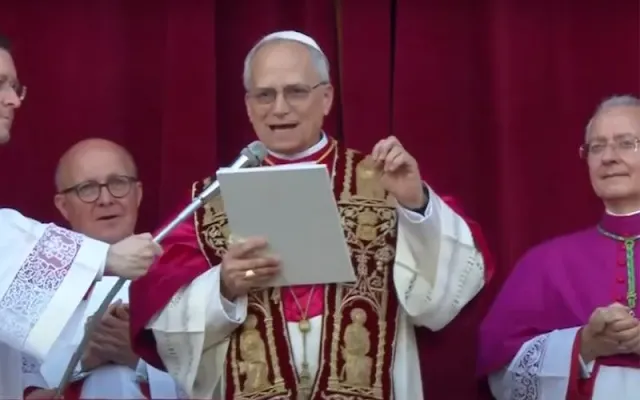 |
| New Pope Robert Prevost to be known as Pope Leo XIV |
From Chicago to the Vatican: Leo XIV Begins Papacy Rooted in Unity and Renewal
DECK
Historic election stirs hopes for unity as Leo XIV steps into papacy with a message of peace and continuity—balancing tradition with Francis’s reformist legacy.
KEY FACTS
- Who: Robert Prevost, now Pope Leo XIV, elected as the new head of the Catholic Church.
- What: Officially named pope by the College of Cardinals following the death of Pope Francis.
- When: Election concluded Thursday; public appearance shortly after 6:00 PM local time.
- Where: Vatican City, St Peter’s Square, following conclave in the Sistine Chapel.
- Why: Sought to continue Pope Francis’s path while signaling a balanced approach.
- How: Chosen in three rounds of voting on the conclave’s second day.
SITUATION SNAPSHOT
Cheers rang out across St Peter’s Square as white smoke curled from the Sistine Chapel chimney, confirming the election of a new pope. Just ninety minutes later, thousands fell silent as Leo XIV stepped onto the basilica balcony, uttering his first blessing as spiritual leader to 1.4 billion Catholics.
WHAT WE KNOW
Pope Leo XIV’s papacy began Thursday evening with a brief yet powerful message emphasizing peace and dialogue. His words echoed the late Pope Francis, whom he succeeds following the latter’s death on April 21. Vatican spokesperson Matteo Bruni noted the speech’s focus on peace was intentional, aligning with biblical themes of post-Easter hope. The conclave, comprised of 133 voting cardinals from over 70 nations, reached a decision after only three voting rounds—an unexpectedly swift consensus that reflects a desire for steady leadership.
WHAT’S NEXT
Attention now turns to how Leo XIV will chart his course—balancing tradition with reform. His upcoming appointments and first major papal trips are expected to hint at priorities, particularly regarding the Church’s role in global inequality, migration, and intra-faith tensions. Vatican watchers are closely monitoring his first homily and any forthcoming encyclicals. A detailed address and press conference from the Holy See are anticipated within the week.
VOICES ON THE GROUND
“‘Peace be upon you,’” the new pope proclaimed from the balcony—his words met with reverent stillness before applause swelled.
“‘God loves us, God loves everyone, and evil will not prevail. We are in the hands of God,’” he added, echoing Pope Francis.
“‘Bravo! That is what we need!’” cried a voice from the crowd.
“I am really excited. Cardinal Prevost, now Leo XIV — it’s gonna be amazing! He said a lot about peace during his speech. I think the world now really needs it,” said 29-year-old Kasper Mihalak from Denmark.
“I am deeply moved to have the chance to be here and live through this joy and be a small part of this historical event,” shared Rosaria Venuto, who traveled four hours with her children to witness the moment.
CONTEXT
Leo XIV's ascension comes during a time of ideological division within the Catholic Church. His predecessor, Pope Francis, known for a progressive agenda, decentralization of Church authority, and global inclusion, inspired both fervent admiration and sharp criticism. Leo XIV brings a unique blend of backgrounds—born in Chicago and shaped by decades of pastoral work in Peru. His Latin American pastoral roots and leadership within the Curia mirror Francis’s focus on the marginalized while potentially appealing to more traditional factions through symbolic choices, such as donning a red cape—an intentional nod to papal customs.
Experts note the significance of his chosen name. The title “Leo” evokes Leo XIII, the 19th-century pope who pioneered Catholic social teaching with the groundbreaking encyclical Rerum Novarum, which addressed workers’ rights and industrial inequality. Bruni connected this legacy to current global shifts, including artificial intelligence and economic disparities. Scholars also point to Pope Leo XIII’s stance against “Americanism,” suggesting Leo XIV’s global message is a conscious distancing from nationalistic currents.
REPORTER INSIGHT
From the cobblestone square, where faithful believers clutched rosaries and craned necks for a glimpse of their new shepherd, the atmosphere was one of emotional gravity. The air buzzed with both hope and reverence—an ancient ritual made vivid by modern uncertainty. As Leo XIV stood above them, sunlight casting long shadows, it was clear that this papacy begins not only with a name but with a tone: one that may strive to mend divisions and remind a fractured world of faith’s quiet force.





 Get it on Google Play
Get it on Google Play



0 Comments